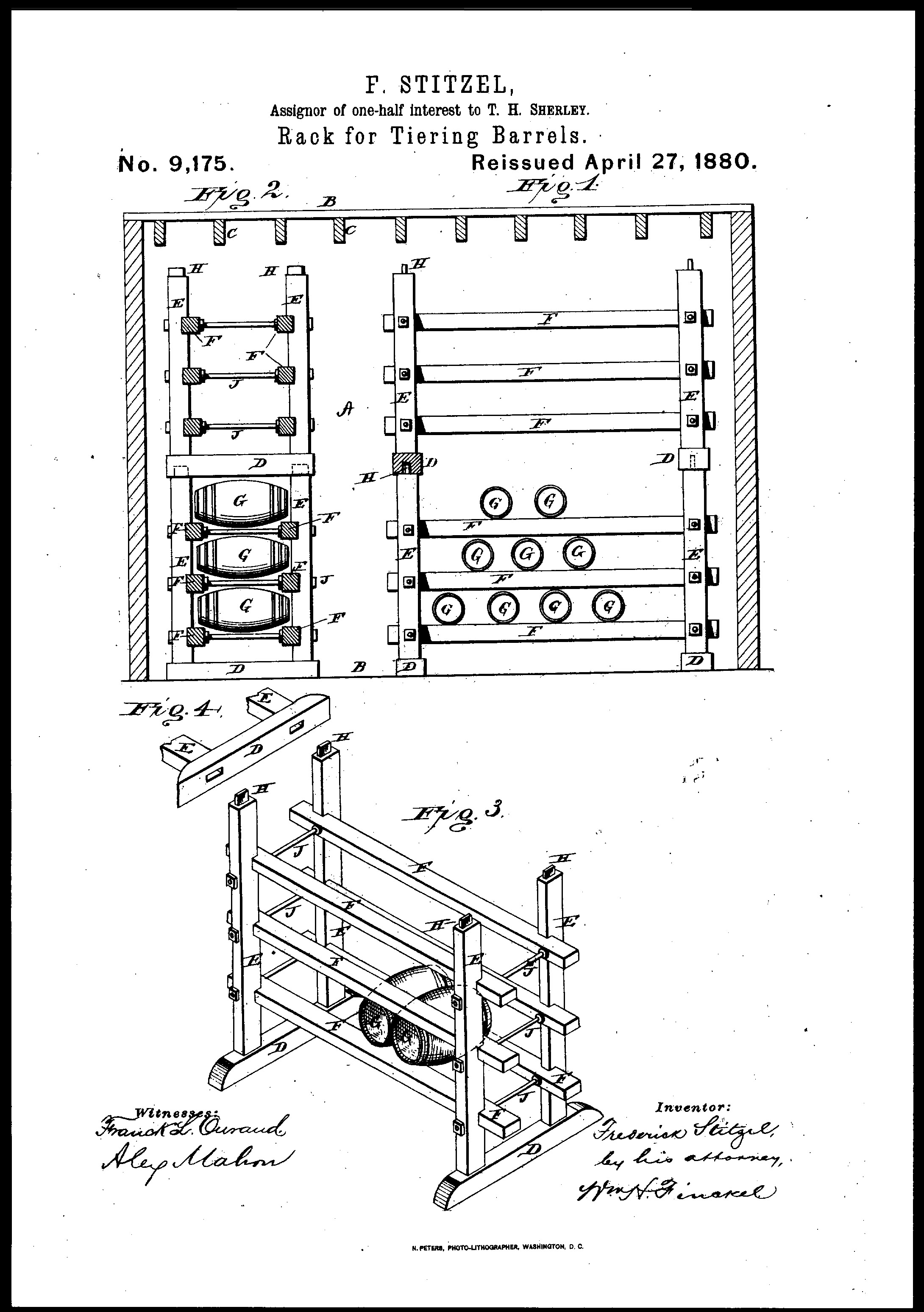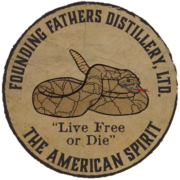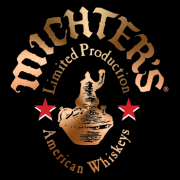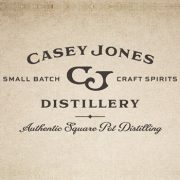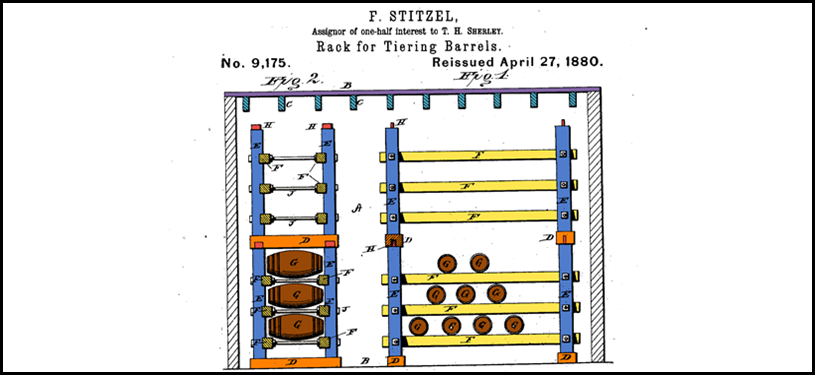
In 1879, Frederick Stitzel patented a system of tiered storage racks for barrels that allowed for increased air circulation around the barrels and made it easier to move the barrels. Whiskey barrels are heavy. A typical 53 gallon wooden stave barrel with metal hoops and rivets is between 90 – 120 lbs. when they are empty. Add in your spirits and these barrels can weigh between 400 and 500 lbs. Stacking barrels on top of one another will work for a few layers but eventually, the weight bearing down on the barrels can cause some to leak or worse, to burst (insert tears here.)
Related Stories
How Location in a Distillery Rackhouse Effects Proof
Part 1: Understanding Oak Barrel Maturation – Know Your Casks
Part 2: Understanding Oak Barrel Maturation – Maturity is Not Age
Part 3: Understanding Oak Barrel Maturation – Location, Location, Location
Stitzel applied for the patent August 22, 1879 and it was granted November 25, 1879. Below is the original patent along with the drawing that garnered Frederick Stitzel the tiered racking system patent. The original black and white drawing is at the bottom of the article, I added the color to the drawing on top to help see how it was actually built.
UNITED STATES PATENT OFFICE
FREDERICK STITZEL, OF LOUISVILLE, KENTUCKY.
IMPROVEMENTS IN RACKS FOR TIERING BARRELS.
Specification forming part of Letters Patent No. 221,345, dated November 25, 1879: application filed August 22, 1879.
(DT Note: There are actually two patents IDs. The original one was 221,345 and then it was reissued on April 27, 1880 with No. 9,175.)
To all whom it may concern:
Be it known that I, Frederick Stitzel, of the city of Louisville, in the county of Jefferson and State of Kentucky, have invented a certain new and useful Improvement in Racks for Tiering Barrels containing whisky and other similar liquids; and I do hereby declare that the following is a full, clear, and exact description of the construction and operation of the same, reference being had to the accompanying drawings, forming part of this specification, and to the letters of reference marked thereon.
Figure 1 is a side view of the racks, showing the manner of arranging them in the house. Fig. 2 is a cross-sectional view of the rack, showing the barrels and projecting ledges of the rack on which they rest. Fig. 3 is a perspective view of the racks, showing their general construction.
Stay Informed: Sign up here for our Distillery Trail free email newsletter and be the first to get all the latest news, trends, job listings and events in your inbox.
This my invention relates to a certain new and useful improvement in racks for tiering barrels containing whisky or other spirituous liquors, the object of which is to provide a portable rack or frame made in sections that will be sufficiently strong to bear the weight of as many barrels as may be tiered between the floors of the house without resting upon each other, thereby avoiding the danger of crushing the staves by the weight, as each tier is made to rest on separate rails projecting on the inside of the frame independent of the others, thereby causing a free circulation of air between the barrels, and at the same time making it easy to remove any of the barrels in the lower tiers without interfering with those above or below. These racks are made of square pieces of timber of suitable size, consisting, first, of four posts tenoned into two cross-pieces as a base, sufficiently wide apart to admit a barrel endwise loosely, to the inside of which three horizontal rails are secured, leaving sufficient space to permit a barrel to pass between them without touching the one above it. These rails are let into the inside of the posts about one -third of their breadth, leaving the remainder to project, so as to answer as a ledge for the barrels to rest upon. In order to secure them firmly to the posts, bolts are provided long enough to pass through the entire frame at each connection, with collars or screw-nuts on the inside and nuts on the outside, which hold them firmly, and also answer as a means of connecting and holding the parts of the frame rigidly in the position.
This my invention will be more fully illustrated in detail in sectional views, Figs. 1 and 2, and the perspective view, Fig. 3, of the drawings, in which A represents the wall, and B B represents the floors of the house. C C are sections of the joists. D D are the cross-pieces or base of the rack-frame. E E are the upright posts, which are made of square timber of suitable size, the lower ends of which are tenoned into the base-blocks D, with short tenons H H on the upper ends, which enter a corresponding mortise in the underside of the base-blocks D to hold them in place when one frame is placed upon another. F F are the horizontal rails of the rack, which are made of square or slightly flat pieces of timber, notched or let into the inside of the posts E about one-third of their size, leaving the remainder to project to answer as a ledge for the barrels to rest upon, and are secured firmly to the posts by means of bolts through the entire frame at each joint, with collars or screw-nuts on the inside and nuts on the outside, which hold the frame firmly, and also answer as a means for connecting the parts and holding the frame perfectly rigid while in use. G G are the barrels in the racks, and H H are the tenons on the top of the posts. J J are the bolts that connect and hold the frame. These bolts may be made either with nuts on the outside: or, if more convenient, screw-nuts may be used on both sides.
Although the above-named racks are intended to be made in independent sections for the purposes of rendering them portable, and more especially adapted to ordinary warehouses, when necessary, as is the case of large store-houses, such as are now used by the revenue department (DT Note: Think Bottled in Bond – BIB here.) for distillers, the stories of which are generally comparatively low, these racks may be enlarged, built in, and connected with the building in any manner most suitable, with passways between, for convenience in removing barrels, or their proper ventilation while in the racks.
Having thus described the nature and object of this my invention, what I claim as new, and desire to secure by Letters Patent, in racks for tiering barrels is –
The horizontal rails F F F, when made to project to answer as a ledge for the barrels to rest upon, as above described, in combination with the posts E E, bolts J J, tenons H H, and base-blocks D D, provided with mortises, substantially as herein described, and for the purpose set forth.
FREDERICK STITZEL
Witnesses: C. HEWITT, FRANK PARDON
RACKS FOR TIERING BARRELS (Color added.)
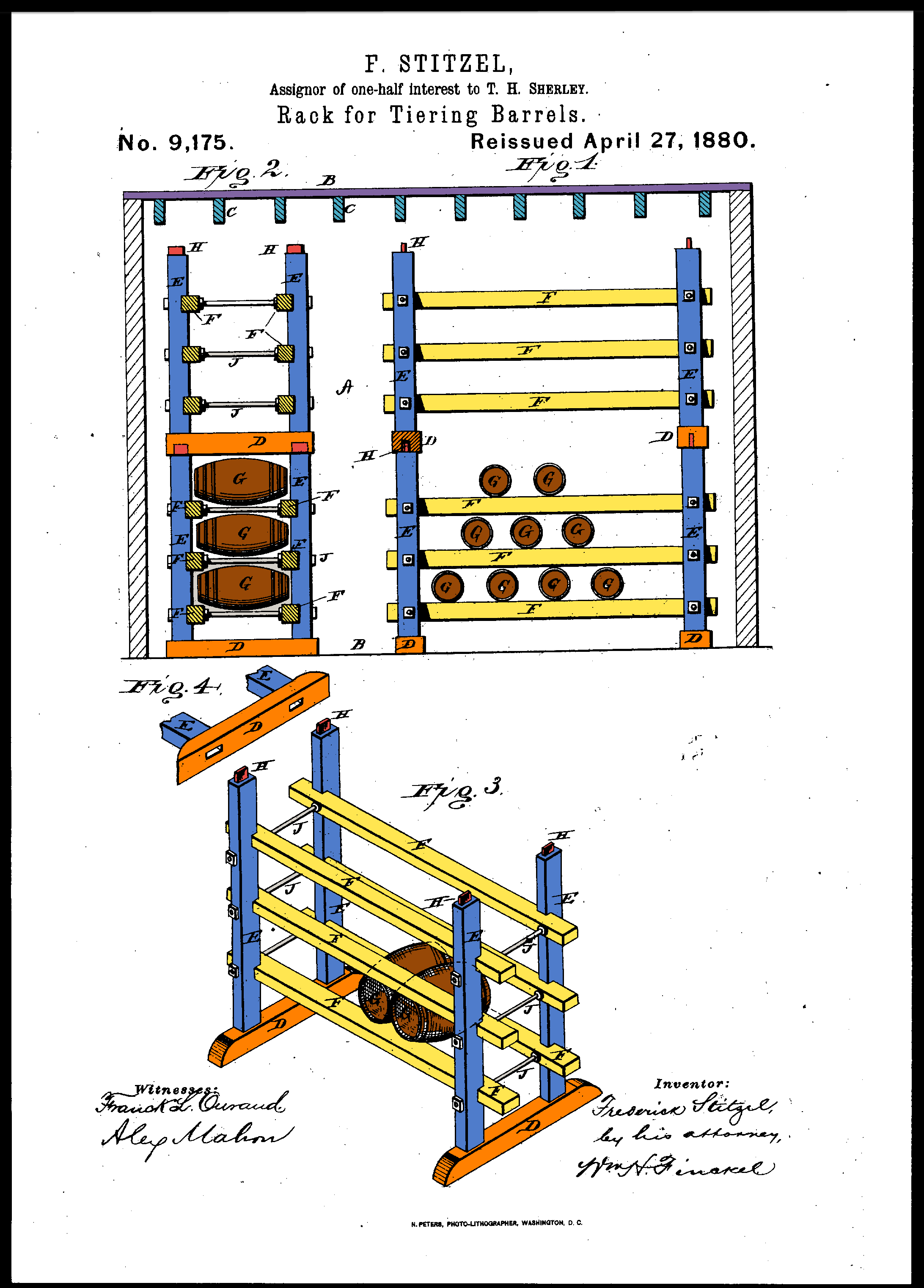

RACKS FOR TIERING BARRELS (Original black and white.)
